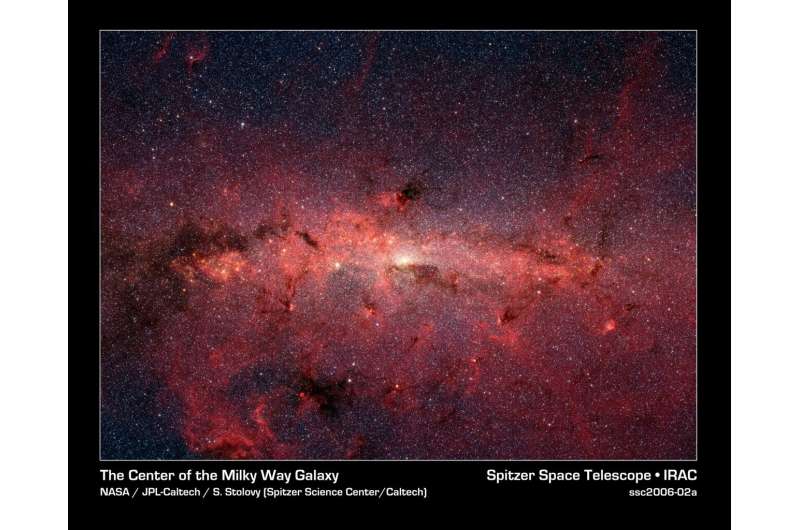Prospecting for interstellar oil

We have developed a new method to look for carbon compounds in space, akin to prospecting for oil on Earth. Our method is published in Monthly Notices of the Royal Astronomical Society.
Between the stars lie vast amounts of interstellar gas and dust, spread thinly throughout our galaxy. The dust can contain compounds of carbon. When it does we call it carbonaceous interstellar dust. This is an important reservoir for the organic material in space. The continual cycle of material between the stars and the gas in the interstellar medium in our galaxy leads to the delivery of organic molecules to newly forming planetary systems.
A special sub-class of organic molecules called prebiotic molecules are thought to play a major role in the formation of life on Earth. Such prebiotic molecules are likely preserved in carbonaceous interstellar dust that are gathered together in planetesimals, in an early stage of planetary formation. The chemical composition in such environments may determine the planet's hospitality to the formation of life there. Therefore, it is important to understand the life cycle of carbonaceous interstellar dust to study this possibility further.
Hydrocarbon molecules—a subgroup of organic molecules—can be helpful to us for this purpose. Aliphatic and aromatic hydrocarbons—molecules containing chains and/or rings of carbon atoms—make up an important fraction of crude oil on Earth, which has been formed underneath the Earth's crust from the residuals of the living organisms.
The aliphatic hydrocarbons present in some oil molecules are also essential for living organisms. They are of particular interest for studies of the interstellar medium as they produce significant features in the infrared region portion of the spectrum which astronomers can then measure with infrared telescopes.
Previously, we produced laboratory analogs of carbonaceous interstellar dust by mimicking the conditions of the interstellar medium in our laboratory in the University of New South Wales in Australia. We then measured the absorption coefficient of the aliphatic hydrocarbons in these analogs of interstellar dust and combined this with observational data from the UKIRT telescope in Hawaii. We found that there is a large amount of aliphatic hydrocarbon material locked within the dust of interstellar space.
Now, we have implemented a new observational method to map the amount of aliphatic hydrocarbon through the dusty sightlines to the center of our galaxy and then applied the method to another field in the galactic disk. The resultant maps have revealed the distribution of the hydrocarbons through the interstellar medium. We found that at least 20% of cosmic carbon is hidden in the oily component of interstellar dust. This makes it an important reservoir for organic material in the galactic disk.
This method could be extended further with the James Webb Space Telescope in space where the features can be measured far better than from the ground, as well as expanded to include ice and silicate features in the dust in addition to the aliphatic hydrocarbons. There is the potential to trace the cycle of organic material in interstellar space now that we are able to observe objects ranging from planet forming disks to distant galaxies. Future applications of the method may enhance our understanding of the distribution of organic and prebiotic material in our galaxy and others.
More information: B Günay et al, Mapping the aliphatic hydrocarbon content of interstellar dust in the galactic plane, Monthly Notices of the Royal Astronomical Society (2022). DOI: 10.1093/mnras/stac1482
Provided by Armagh Observatory





















